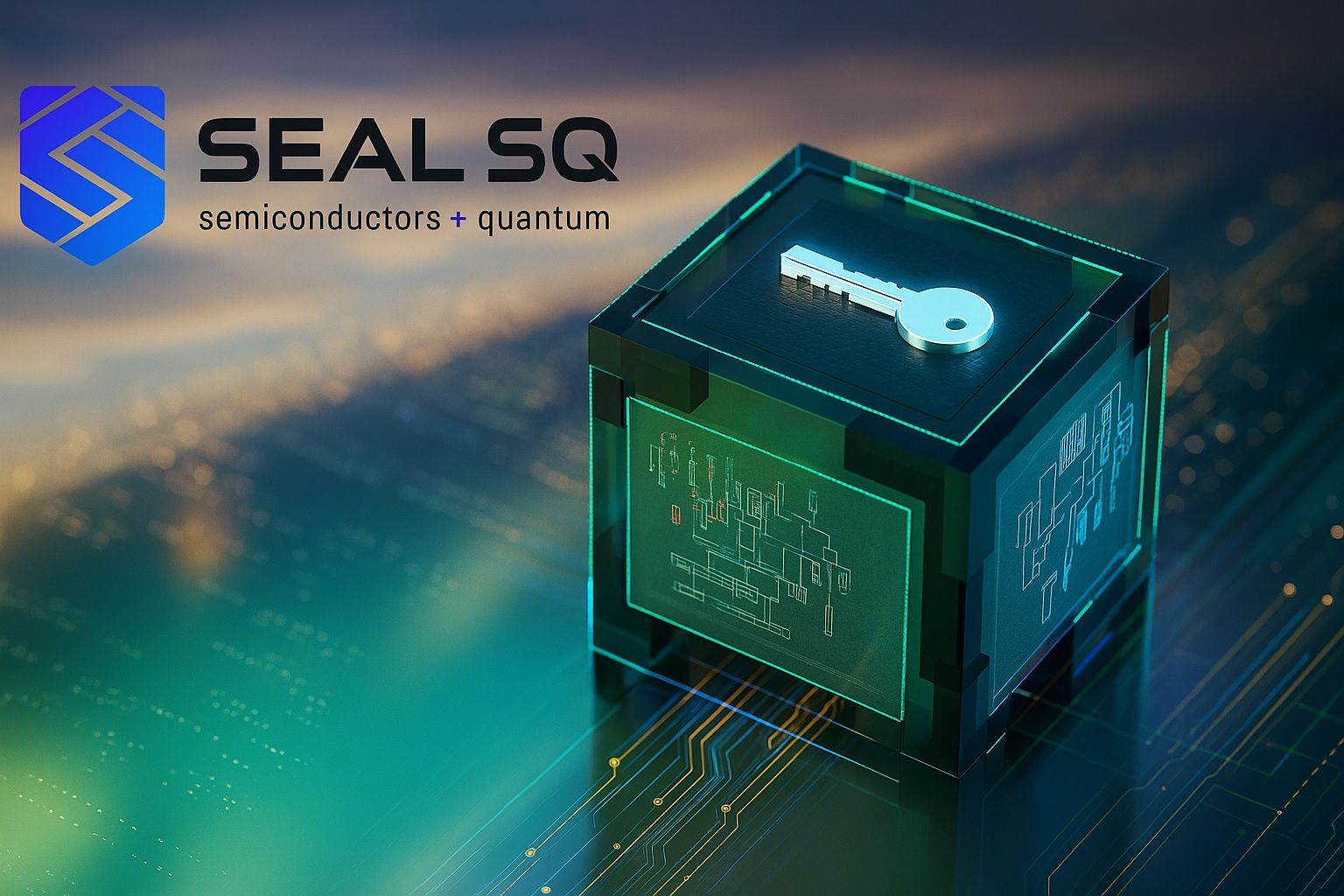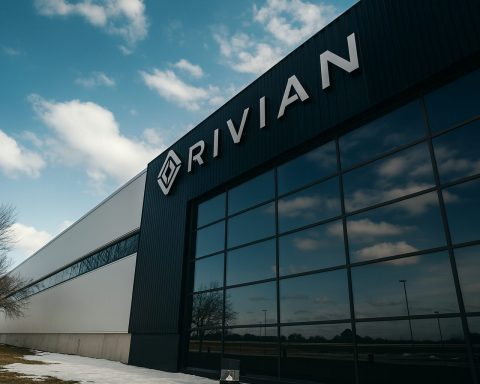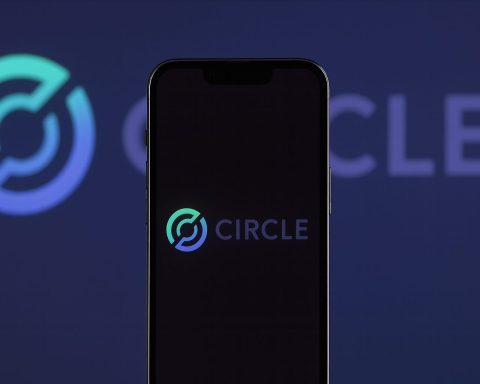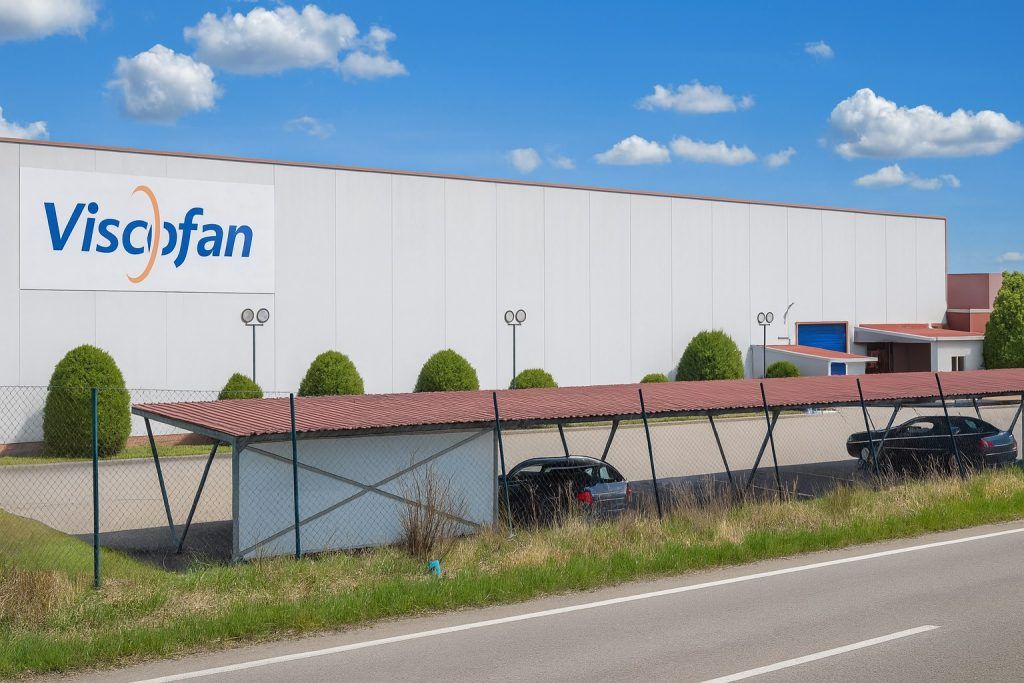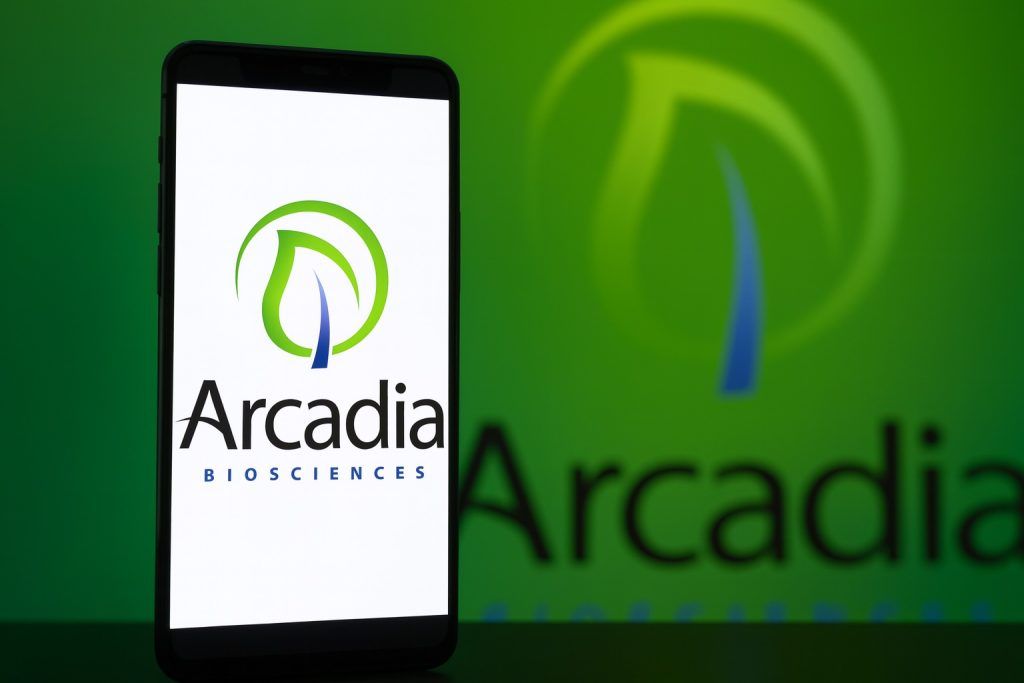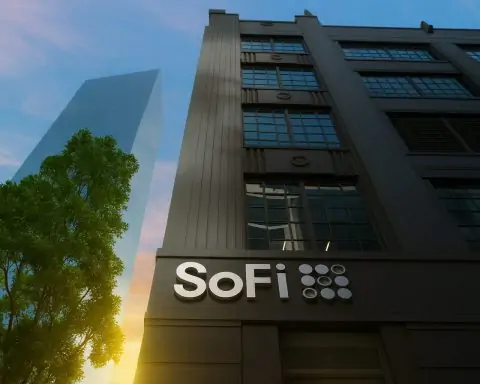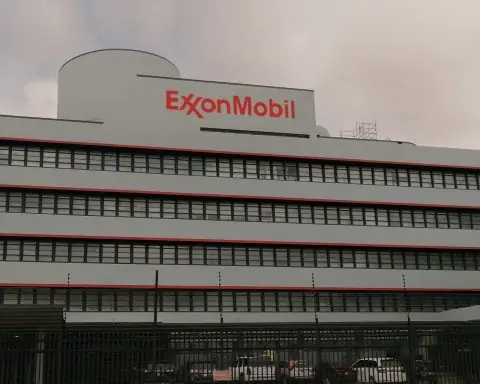- Stocks surge on deals: SEALSQ shares have exploded higher in October, roughly quintupling from summer lows. The stock gained ~39.7% on Oct. 9 alone [1] and added about 22–25% on Oct. 14 after a flurry of announcements [2] [3]. LAES closed near $7.65 on Oct. 14 [4], up about 24.8% that day. This puts the market cap close to $1 billion, a dramatic rise for the micro-cap name. Trading volume has been frenzied (e.g. ~117 million shares on Oct. 9 [5]), signaling both excitement and volatility.
- Major partnerships announced: In the past week SEALSQ rolled out deals in finance, energy and defense. On Oct. 14 it teamed with Switzerland’s Wecan Group to build a post-quantum Know-Your-Customer (KYC) system for banks [6] [7]. The day before, it expanded a smart-meter pact with Landis+Gyr (securing North American power grids) [8] [9]. And on Oct. 9 it formed a US venture with Trusted Semiconductor Solutions (TSS) to co-develop “Made in USA” quantum-resistant chips for defense [10] [11]. These agreements plug SEALSQ’s hardware encryption tech into established players, validating its security vision.
- Strong growth and cash: SEALSQ reported preliminary 9M 2025 revenue of $9.9 million (up 41% YoY) [12], with Q3 ($5.1M) exceeding all of H1. Management reaffirmed full-year guidance of $17.5–20.0 M (roughly 60–80% growth) [13]. To fuel growth, the company raised about $69 million in October (via warrant exercises), lifting its cash hoard to ~$220 million [14] [15]. This “robust PQC innovation funding” provides a buffer for R&D on next-gen products.
- Innovative product pipeline: SEALSQ is on the brink of launching key hardware. Its Quantum Shield QS7001 chip – the first semiconductor with NIST-standardized post-quantum algorithms baked in – is due to debut November 2025 [16]. A next-gen Trusted Platform Module (“QVault”) TPM will follow in 2026 [17]. Even more futuristically, SEALSQ is launching a post-quantum blockchain satellite in November (first of five planned) [18], demonstrating encrypted data links from space. These moves underscore SEALSQ’s aim to “future-proof” IoT, blockchain, and defense systems against quantum attacks [19] [20].
- Industry trends – AI, IoT & cybersecurity: The company’s progress taps into several tech megatrends. Its deals with Wecan and AI-infrastructure firm SEALCOIN AG are explicitly about embedding quantum-resistant encryption into banking and AI systems [21] [22]. SEALSQ’s existing VaultIC chips are already in billions of IoT devices, and its Landis+Gyr tie-up encrypts smart grid hardware [23] [24]. As edge computing, 5G and AI proliferate, demand grows for hardware-level security. Analysts note governments worldwide are mandating post-quantum crypto – the US set a 2027 deadline for new agency systems to be quantum-safe [25] – so SEALSQ’s niche is poised to expand dramatically (the global quantum security market is forecast to jump from ~$4 B in 2024 to ~$72 B by 2035 [26]).
- Analyst stance and buzz: Professional ratings are mixed. Most Wall Street models peg LAES at a Hold/Neutral rating with price targets in the $6–6.50 range [27] [28] – roughly current levels. TipRanks’ AI “Spark” concurs that technical momentum is strong but flags valuation and execution risks [29]. (An earlier TipRanks note put an even lower target around $4.50 before the latest run [30].) Meanwhile, online chatter is frothy: forums are full of “moonshot” talk and the stock’s beta is very high. Nonetheless, some bulls argue there’s still room above $7–8 if SEALSQ hits its milestones, given the tiny revenue base (a single new contract could be material) [31].
Stock Surges on Quantum Security Buzz
SEALSQ’s share price has exploded higher in October, powered by news flow rather than broad markets. After spending months under $5, the stock spiked ~40% on Oct. 9 alone [32] and continued its advance into mid-October. By Oct. 14 the shares briefly traded near $7.70 [33] – about 20× higher than early-2024 levels. In one session Oct. 14, LAES jumped another ~22–25% (to close ~$7.65) when the Wecan partnership was revealed [34] [35]. This manic rise came on huge volume (well over 100 million shares on Oct. 9 [36]). Market data indicate LAES has repeatedly broken out above its key moving averages, and technical scores (e.g. Benzinga’s momentum index) are extremely high [37] – classic signs of a runaway rally. Investors note, however, that the stock is potentially overbought (its RSI is in the upper 70s [38]), so a pullback or consolidation can’t be ruled out. Still, traders are betting on more upside as long as the newsflow remains positive.
Strategic Partnerships Across Key Sectors
The catalyst for this rally has been a string of high-profile deals across finance, energy and defense – sectors where cybersecurity is critical. On Oct. 14 SEALSQ announced a partnership with Wecan Group (Swiss blockchain/compliance firm) to develop a quantum-proof KYC identity solution for banks [39] [40]. This aims to “prepare regulated institutions for the post-quantum era,” as CEO Carlos Moreira put it: “Through our quantum-resistant technologies, we will ensure sensitive client data remains secure, even against future quantum attacks” [41]. The same day’s news lifted shares sharply in early trading.
The previous day (Oct. 13) SEALSQ said it was expanding its work with Landis+Gyr, a leader in smart metering. Benzinga reports that SEALSQ’s PKI-based security will now be integrated at Landis+Gyr’s North American meter plants, encrypting communications from smart gas and electric meters across the grid [42] [43]. Landis+Gyr’s CSO, Todd Wiedman, emphasized that this enhances the grid’s cybersecurity for years to come: “By expanding our relationship with SEALSQ at our North American manufacturing facilities, we are positioned to continue evolving our security strategy to meet the needs of our utility customers well into the future” [44]. That news also sent LAES higher on Oct. 13.
Earlier (Oct. 9) SEALSQ announced a defense-sector alliance: it will co-develop “Made in USA” secure chips with Trusted Semiconductor Solutions (TSS) [45] [46]. The goal is custom semiconductors that meet strict government trust standards while embedding SEALSQ’s quantum-safe encryption. Moreira called this “a pivotal step in SEALSQ’s US strategy” [47], underscoring the importance of having Pentagon-grade chips. TSS’s CEO added that integrating SEALSQ’s technology could “deliver unmatched trust and resilience” for defense customers [48]. These defense and energy contracts signal institutional validation: LAES shares jumped up to 40% intraday on that news [49].
Combined, these deals show SEALSQ plugging its hardware into critical infrastructure. As TechStock² analysts noted, the strategy “signals SEALSQ’s growing role in embedding quantum-resistant security across [multiple] sectors” [50] [51]. By allying with established firms in banking, utilities and the military, SEALSQ hopes to scale its tiny foothold into real revenue. But execution is key: observers warn that winning pilots and turning them into big orders will be the real test.
Robust Growth and Financial Position
Beyond the hype, SEALSQ’s fundamentals are improving. The company’s Oct. 8 earnings release showed 9M 2025 revenue of $9.9 million (41% higher than a year ago) [52]. Notably, Q3 ($5.1M) exceeded all of H1, reflecting accelerating momentum. Management reaffirmed 2025 guidance of $17.5–20.0 M in revenue [53] – about 60–80% growth year-over-year – and even projects 50–100% growth in 2026 and beyond. SEALSQ’s expanding project pipeline is now roughly $175 million (potential revenue) over 2026–28 [54], suggesting plenty of opportunities.
The balance sheet is strong for now. The company raised about $69 million in October via warrant exercises, boosting cash to around $220 million [55] [56]. With so much funding, SEALSQ is “entering its growth phase,” in Moreira’s words [57]. He notes that production for the QS7001 chip and QVault TPM in 2026 will drive revenues. Still, SEALSQ is not yet profitable: operating losses continue as it ramps R&D and scaling. Analysts caution that the recent financing diluted shareholders (the share count spiked) [58], so future capital needs and expenses remain watchpoints. In short, the company has resources for its plans, but must convert high R&D spending into real sales to justify its valuation.
Innovation Pipeline: Chips, Satellites and Global Expansion
SEALSQ is backing its partnerships with cutting-edge products. The QS7001 chip – a 40nm semiconductor with NIST-approved post-quantum algorithms embedded – is due to launch at a major conference in November 2025 [59] [60]. This hardware chip could be a drop-in quantum-safe solution for everything from blockchain wallets to military drones. Shortly after QS7001 comes QVault, a TPM chip updated with quantum cryptography (targeting enterprise and government use cases in 2026) [61]. These builds leverage SEALSQ’s legacy VaultIC secure chips (used in billions of IoT devices already) as a base. [62]
Perhaps the boldest play is space-based security. SEALSQ is flying a satellite (via its partner WISeSat) in Nov. 2025 carrying the QS7001 chip [63]. This will demo encrypted blockchain transactions from orbit – a testbed for ultra-secure comms in finance or defense. CEO Moreira enthuses this could “redefine the future of secure space transactions,” combining satellites, blockchain and quantum crypto [64]. It’s the first of five planned post-quantum satellites by 2026, addressing the $159 B+ satellite communications market [65].
On the manufacturing side, SEALSQ is expanding globally to improve chip supply and local market presence. It recently joined Spain’s €40M Quantix Edge program to set up a sovereign post-quantum chip facility (a deal expected to generate ~$25M) [66]. It also signed R&D agreements in South Korea and formed JVs in India and the UAE (including a $100M “Kuaentum” tech hub in Abu Dhabi [67]). These moves aim to localize quantum-secure semiconductor production and capitalize on government initiatives worldwide. In sum, SEALSQ is simultaneously forging the products and the partnerships to deliver them at scale.
Market and Analyst Perspectives
Wall Street’s view is cautiously mixed. Most analysts currently rate LAES as a Hold/Neutral. TipRanks data show the average price target around $5.75–$6.00 [68], reflecting modest upside from current levels. TipRanks’ in-house AI “Spark” tool labels LAES Neutral, noting strong technical signals and growth projects but flagging profitability and valuation issues [69]. Simply Wall St analysts are similarly intrigued but cautious: they call SEALSQ’s push into post-quantum security “exciting” but warn it “raises expectations for flawless execution” [70]. In other words, experts see huge potential if everything goes right – but even a small misstep could dent enthusiasm.
On the bullish side, a few analysts believe the stock could test or exceed the $7 mark (and beyond in a year) if SEALSQ nails its roadmap [71]. Indeed, the very run-up has forced some price targets higher. Spark notes the latest average target around $6.50 [72], and a Maxim Group analyst reiterated a $6 buy rating recently [73]. Short-term technical patterns also point to a possible test of last week’s peak (~$7.57) [74], though overhead resistance and the overbought RSI suggest caution.
In interviews, SEALSQ’s management emphasizes that the company has now “entered its growth phase” [75], and is “at the heart of the digital trust revolution” [76] as governments rush to update cybersecurity. Some veteran investors note that hedge funds like Susquehanna have started accumulating LAES [77], a sign that smart money sees real promise. But others have taken profits, and with a current market cap around $800–900M SEALSQ trades at ~45× trailing revenue [78] – a stratospheric multiple that assumes continued high growth.
Outlook: High Reward, High Risk
Looking ahead, SEALSQ’s stock trajectory will hinge on execution of its ambitious plans. Positive catalysts could include the successful launch of QS7001 next month, customer wins from the new partnerships (turning announcements into contracts), and continued revenue acceleration. If SEALSQ delivers on its guidance or beats it, the near-term upside could easily keep shares in the low-$8 range or above. Indeed, one analyst noted “significant upside” if SEALSQ doubles revenue again in 2026 [79], tapping even part of its large pipeline.
However, bears caution that the stretch from promise to profit is long. The company must integrate new acquisitions (like IC’ALPS) [80], meet stringent security certifications, and scale manufacturing – all while burning cash. Any disappointments or delays (for example, slipping chip launch dates) could trigger a swift pullback given the elevated valuation and hype. Investors should also factor in the sector’s volatility; LAES’s beta is low, but its price swings have shown little correlation with the broader market [81].
In summary, SEALSQ (LAES) offers a rare blend of cutting-edge technology and exciting growth prospects, wrapped in a shell of small-company risk. The company has unmistakably captured the market’s imagination with its quantum-security vision – from protecting IoT devices to beaming encrypted data from space. As more deals are signed and products ship, analysts will closely watch whether the company can turn today’s buzz into tomorrow’s recurring revenues. For now, LAES remains a moonshot story: one with potentially transformative upside if execution stays flawless, but one that demands caution against frothy expectations.
Sources: Company filings and press releases [82] [83]; TechStock² news analysis [84] [85]; Investing.com and Benzinga news reports [86] [87] [88]; Simply Wall St and TipRanks analysis [89] [90]; GuruFocus news alert [91], StockInvest historical data [92], and other market data. All data are as of mid-Oct. 2025.
References
1. ts2.tech, 2. www.investing.com, 3. stockinvest.us, 4. stockinvest.us, 5. ts2.tech, 6. www.investing.com, 7. www.gurufocus.com, 8. ts2.tech, 9. www.benzinga.com, 10. ts2.tech, 11. www.investing.com, 12. www.sealsq.com, 13. www.sealsq.com, 14. ts2.tech, 15. www.sealsq.com, 16. ts2.tech, 17. ts2.tech, 18. ts2.tech, 19. ts2.tech, 20. www.investing.com, 21. simplywall.st, 22. ts2.tech, 23. ts2.tech, 24. www.benzinga.com, 25. www.sealsq.com, 26. ts2.tech, 27. ts2.tech, 28. www.tipranks.com, 29. ts2.tech, 30. ts2.tech, 31. ts2.tech, 32. ts2.tech, 33. ts2.tech, 34. www.investing.com, 35. stockinvest.us, 36. ts2.tech, 37. ts2.tech, 38. www.gurufocus.com, 39. www.investing.com, 40. www.gurufocus.com, 41. www.investing.com, 42. ts2.tech, 43. www.benzinga.com, 44. www.benzinga.com, 45. ts2.tech, 46. www.investing.com, 47. www.investing.com, 48. www.investing.com, 49. ts2.tech, 50. ts2.tech, 51. ts2.tech, 52. www.sealsq.com, 53. www.sealsq.com, 54. www.sealsq.com, 55. ts2.tech, 56. www.sealsq.com, 57. www.sealsq.com, 58. ts2.tech, 59. ts2.tech, 60. ts2.tech, 61. ts2.tech, 62. ts2.tech, 63. ts2.tech, 64. ts2.tech, 65. ts2.tech, 66. ts2.tech, 67. ts2.tech, 68. www.tipranks.com, 69. ts2.tech, 70. ts2.tech, 71. ts2.tech, 72. ts2.tech, 73. www.tipranks.com, 74. ts2.tech, 75. www.sealsq.com, 76. www.sealsq.com, 77. ts2.tech, 78. ts2.tech, 79. ts2.tech, 80. www.sealsq.com, 81. ts2.tech, 82. www.sealsq.com, 83. www.sealsq.com, 84. ts2.tech, 85. ts2.tech, 86. www.investing.com, 87. www.benzinga.com, 88. www.investing.com, 89. ts2.tech, 90. www.tipranks.com, 91. www.gurufocus.com, 92. stockinvest.us
